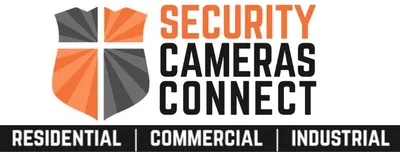Installing a security camera provides crime deterrence and prevention, real-time remote monitoring, and increased peace of mind and security for homes and businesses. Learning how to install a security camera doesn’t have to be a complicated process, since most camera systems include detailed instructions. The basic process involves choosing the right location, drilling holes and running wires, connecting the camera to the power source, and then to the monitoring screen. Installing a security camera yourself offers significant cost savings, provides flexibility and customization of the system, and serves as a valuable learning opportunity.
Say Goodbye to Worries: How to Install a Security Camera Effortlessly
According to a study by North Carolina, homes with security cameras are 300% less likely to be burglarized. A security camera installation can be a DIY project or a professional’s job. Learning how to install a security camera yourself eliminates installation fees, offering tailored placement and flexibility to adjust, expand, or modify your system that best meet your specific needs. Choosing the proper placement is crucial, often at a high vantage point or a minimum of nine feet for outdoor cameras to prevent tampering and provide broad coverage.
| Important fact: Many insurance companies offer a premium reduction of 5% to 20% for properties protected by security camera systems. |
Here is your step-by-step guide to easily install your own security camera like a pro.
Choosing the Right Location – Planning and Preparation
Choose your system
Decide between wired or wireless cameras, which determines the installation process. Wireless cameras don’t require professional installation and can be plugged into any outlet.
Identify the locations
Identify key areas to monitor, such as the front porch, driveway, or high-traffic indoor areas. Outdoor cameras need to be mounted on a wall and roof, while indoor cameras can be placed on a table or shelf.
Gather Your Tools
You’ll need the camera system, drills, appropriate cables for wired systems, screw drivers, and potentially cable management tools.
| Did you know?Businesses with security cameras experience up to 50% decrease in employee theft and shoplifting, while surveillance cameras boost employee productivity by up to 20%. |
Mount the Camera – Installation Steps
Mount the cameras
For installing outdoor cameras, you’ll need to securely attach the cameras to the chosen location, ensuring they are out of easy reach.
Run wires
For wired systems, drill holes and run wires. Carefully route power and data cables from the camera to the central recording unit, often through the walls and conduits. You can hire a professional if you’re not sure about handling this step, or consider installing wireless security cameras.
Connect to the power source
Plug the cameras into their respective power sources.
Connect to the network
For wired systems, connect the camera to your router or recorder using cables. For wireless cameras, connect them to your home’s wifi network.
Connect to a display
Connect the recording device (DVR or NVR) to a monitor to view the live feed.
| Fast Fact According to a study by the Urban Institute, a reduction in crimes in one location justified the cost of the cameras. Chicago saved $4.30 for every dollar spent on the video surveillance solution. Doing so, the city saved a whopping $815,000 per month on costs associated with the criminal justice system and victims’ financial costs. |
View the Footage – Post Installation Steps
View the footage
Use the system’s software or a connected monitor to check the camera angles and ensure you have a clear view of the desired areas.
Adjust and test
Fine-tune the camera angles and test the system to ensure everything is working correctly. If you’re using wireless, you’ll need to make sure that the signal is strong enough to reach your device.
Conclusion
When it comes to installing a security camera, you can choose from wired to wireless options, depending on the coverage you’re looking for. The basic installation process revolves around choosing the right placement, running wires in the case of wired cameras, and connecting to the power source, the network, and the monitoring screen. With the right knowledge, you can easily install security cameras, as most come with detailed instructions. If, however, you’re not comfortable with a DIY process, consider hiring a professional for effective monitoring of your property and to help deter any criminal activity.
FAQs
Is it better to have wired or wireless security cameras?
The choice depends on your priorities for reliability, installation complexity, and flexibility. Wired cameras offer a secure connection but are harder to install, while wireless cameras have easier DIY installation but are vulnerable to signal interference and require battery management.
Do all security cameras need to be connected to WiFi?
Not all wireless security cameras require wifi. Some models use local storage like such as SD cards or network video recorders 9NVRs), while others connect via cellular network.
Where should I not place security cameras?
Do not install cameras in private areas such as bathrooms, changing rooms, and bedrooms, due to privacy violations. Avoid placing in locations that create blind spots, do not install too low, and avoid aiming at a neighbour’s property.
